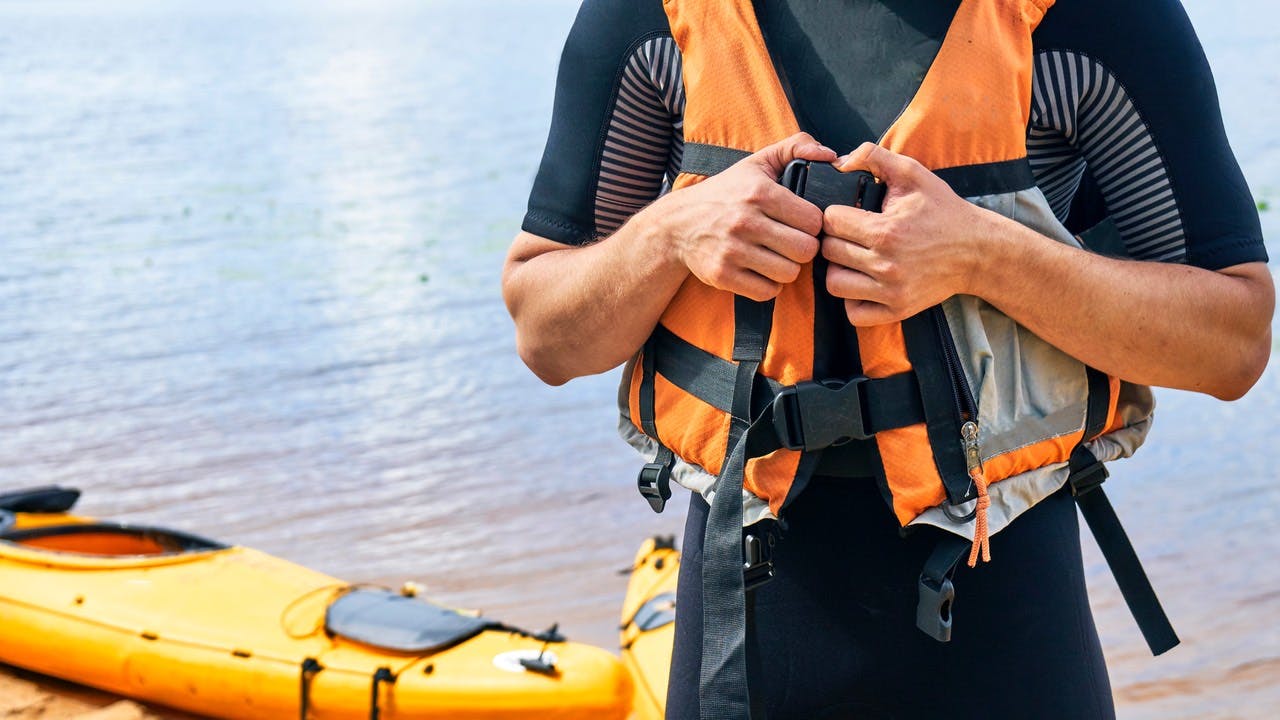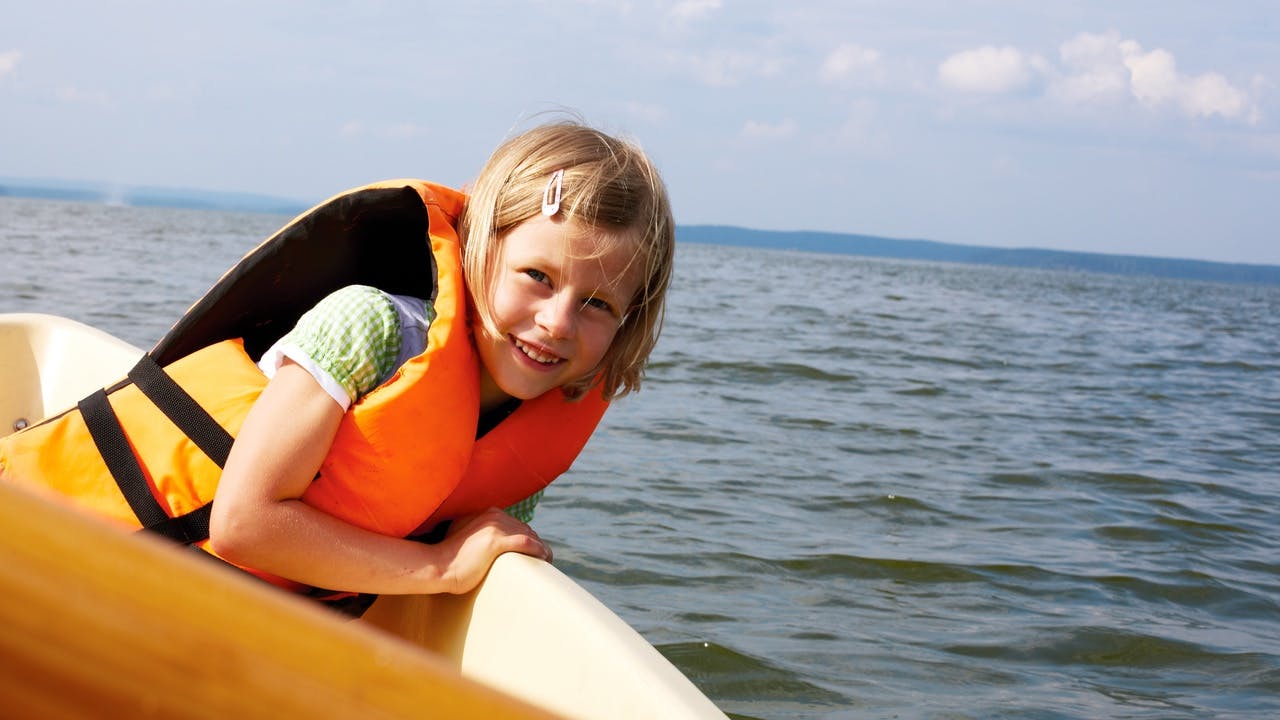Life jackets buying guide
It’s important to wear a life jacket when you are out sailing, canoeing or just on the quay with fishing tackle in your hands. Equally important is choosing the right model. Here we’ll discuss the most important things you need to know when choosing a life jacket.
Different types of life jackets
- Inherently buoyant life jackets: Helps you to turn your body the right way up in the water so that your face faces upwards. An important feature if you are unconscious or for other reasons can’t turn around yourself. Buoyant life jackets are a good choice if you can’t swim or if the jacket is to be used on a small child. The buoyant jacket’s collar helps lift the head above the surface of the water. A buoyant jacket must have a safety harness, whistles and reflectors.
- All purpose buoyancy aids: Lightweight and comfortable to wear with better mobility. This type of life jacket helps you float on the water, but won’t roll you over on your back. Only people who are confident swimmers should wear these life jackets. Some life jackets have foam segments that follow the shape of the body, making it more comfortable to use.
- Floatation clothing: If you want a jacket, vest or overall that both warms and keeps you floating in the water, you should get floatation clothes. They have the same functionality as a life jacket, but they also protect against wind and bad weather when you are not in the water. Like life jackets, you’ll get a good buoyancy, but floatation clothing will not help you roll over on your back. Floatation clothing should only be used by confident swimmers.
- Inflatable life jackets: The safest type of life jacket is the inflatable life jacket. It uses cartridges of carbon dioxide that inflates the jacket so you float. It either happens automatically when a sensor senses that you land in water or manually whenever you want it. Inflatable life jackets have a high level of buoyancy and are comfortable to use. However, they require the most maintenance and must be taken in for a control every year to ensure that they work properly.

Safety markings
Life jackets have different CE safety markings marked in "Newton". There are four safety markings that cover standard buoyant jackets, floatation clothing and inflatable life jackets.
- 50 Newton: buoyancy jackets and floatation clothing that keep you floating, but without helping you to roll over to your back. Common variants in this category are jackets for sailing and fishing. They require that the person using the life jacket is a confident swimmer. Life jackets marked "50N" are for persons weighing 25 kilograms or more.
- 100 Newton: buoyancy jackets where the main flow force is concentrated to the front of the life jacket. These jackets have big collars and help the wearer to roll over to their backs. Buoyancy jackets labelled "100N" are both for confident swimmers and for those who cannot swim.
- 150 Newton: Inflatable life jackets that have good turning ability when inflated. These life jackets have either manual or automatic gas inflation. Life jackets marked with "150N" have no ability to float when they are not inflated and are suitable for persons weighing 40 kilograms or more
- 275+ Newton: Inflatable life jackets with extremely good turning ability. They are specially designed for professional use, such as emergency services, and have either manual or automatic gas inflation. Suitable for persons weighing 40 kilograms or more.
The right size and model make all the difference
It’s important that you choose a model that is adapted to your body weight and to how confident you are at swimming. The sizes are not indicated in letters as usual clothing, but in approximate body weights.
A life jacket usually has a weight range of 20 kilograms, so the mark can be 40/60 to indicate that it works with users weighing between 40 and 60 kilograms. An inflatable life jacket has a larger range, for example, some models can handle 40 to 150 kilograms.
When you choose, it's more important that the fit is good, rather than being within the weight limits. If you weigh 85 kilograms and feel that a jacket for 60/80 fits better than one for 80/100, it's the first one you should choose. It’s very important that the life jacket does not slide around the body when in water.

Life jackets and children
Children should never use life jackets that are inflatable. Only select models with a collar and that are customised for the weight and size of the child. A rule of thumb is that the child should be able to wear a jumper or jacket underneath the life jacket. To check if the size is good for your child, you can tighten the life jacket so that it’s fitted properly, then grab the jacket on the shoulders and lift. The child’s chin and ears should not slide through the neck opening of the jacket.
Children wearing a nappy can affect the child’s ability to float. It’s important that you take this into account when choosing a life jacket. One tip is to let the child get acquainted with the feeling of floating on the water with a life jacket. This makes it easier to handle any situation where the child falls in the water and has to stay on the surface before help arrives.
Here are all life jackets for children on PriceSpy.
Safety harness and straps
If you are out on your own on a boat, it’s good to use a safety harness and a safety strap. With these, you secure yourself to the boat in case you fall into the water. It’s important that you only use equipment that is approved according to EN ISO 12401.
The safety harness can be used either under the jacket or on top of the jacket, depending on how it’s built. The harness has a D-ring that you attach to the safety strap. The other end of the strap attaches to a fixed point on the boat.
Safety straps are available as both ropes and lines, with two or three hooks. Some safety straps can be 12 meters or longer. Safety straps are sometimes adjustable so you can choose the required length yourself.